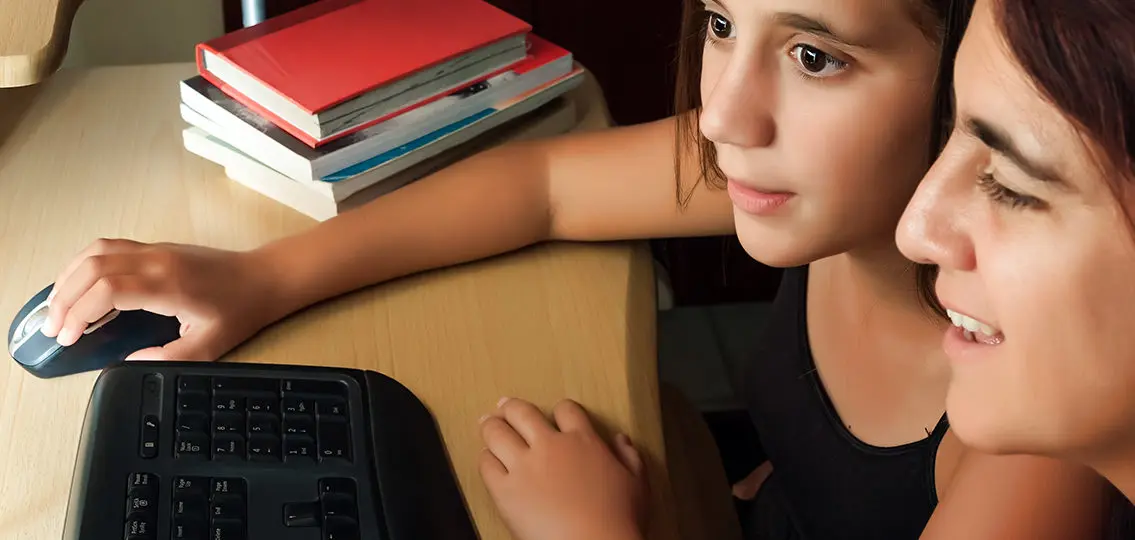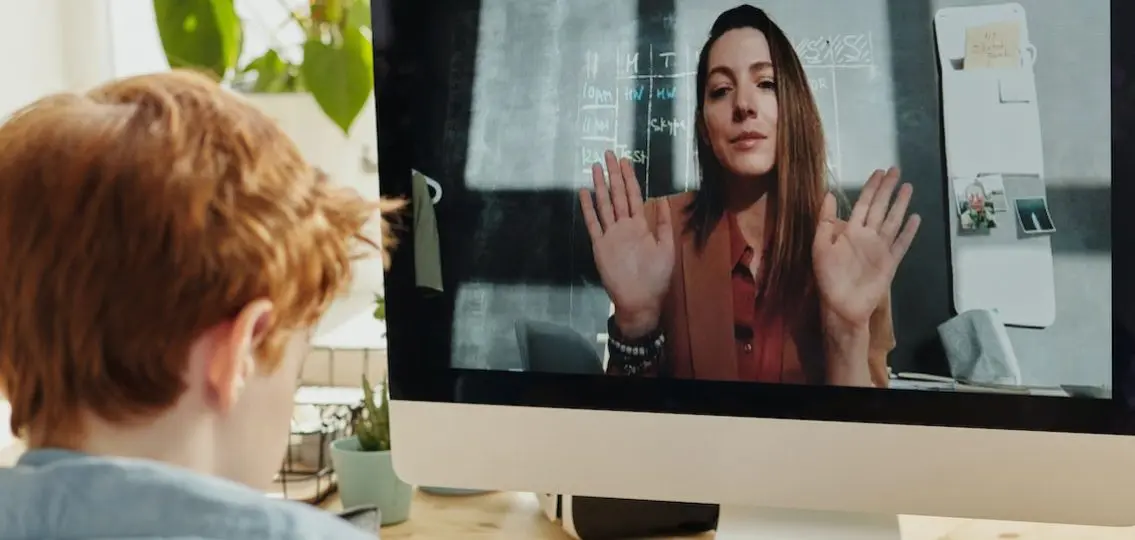The trifecta of fresh air plus natural surroundings plus exercise is magical. We all know it, but sometimes it takes effort to get yourself outside and moving–especially when you might feel like you don’t have time for it. People’s trifectas may vary, but for me that means going out for a solo run with my tunes keeping me pumped up and my thoughts running freely. About a half mile or so into my run, my mind drifts off into the place where magic happens: it’s where I think up my most creative lessons, my stress slides away, and I start noticing things for which I feel grateful. I come back feeling empowered and rejuvenated.
| [adrotate banner=”157″] |
Like many teachers, I am finding this whole situation of being home and trying to teach remotely really stressful.
I teach ELA and social studies to 6th graders in an elementary setting, so my students will go to the Middle School next year. I also have two kids of my own: a son in 5th grade (also his last year of elementary school) and a daughter in 7th grade. This age group is very dear to my heart because they are in the midst of incredible change during the year I have them. Sure they’re physically changing, but their minds and ideas are also evolving. They’re at a wonderful place where they’re a mixture of kids and teens. They’re funny, they’re challenging, they’re vulnerable, they’re impressionable, and they’re incredibly kind.
Most days I swing between feeling like I am doing really well and being on the verge of tears. Hence, the importance of the magical trifecta! Today, as I was running and reached that sweet spot where my mind drifted, I had some pretty powerful realizations about the GOOD coming out of this pandemic for our students.
I decided to do a Top Ten List (any other Letterman fans out there?) to highlight what I found (in no particular order):
10. Students are learning self-advocacy
Teachers always want their students to ask questions when they need clarification, or to stand up for themselves. My 6th graders have been doing this! Because many of them have parents who are busy with work, my students are the ones reaching out to me via email or Google Classroom to ask questions, to ask if they can set up a meeting with me, to make suggestions, or to just say hi. This skill will be immensely beneficial to them as they move into Middle School and have many more teachers—not to mention that this self-advocacy is often not learned till much later in life. Most of my communication since being home has actually been directly with students (as opposed to with their parents).
9. Students have figured out a schedule that works for them
At the start of all this, I felt like I was working 24/7 because I thought that I needed to respond to a student as soon as they wrote to me. As you can imagine, I couldn’t sustain that and, during a walk with my daughter one day, she wisely advised me to set up a schedule for myself that split my time between home and school. As I was navigating that process on my end, my students were doing the same for themselves.
| [adrotate banner=”167″] |
Now I know that there are some students who get up and get right to work first thing in the morning and there are others who are nightowls and will turn in assignments long after I’m finished working for the day. And everyone’s schedules are working for them, which is the important thing. As a teacher, it reminds me that it’s important to trust that my students might know what’s best for themselves.
8. Social-Emotional Learning (SEL) is absolutely vital to good health
Students are finding ways to nurture themselves by making connections with people and being introspective. They’re realizing that they need positive relationships, hobbies, and ways to process their feelings and stress. This discovery could single-handedly improve their lives. At the same time, they’re figuring out how to filter and navigate through their stress: through journaling, drawing, or being active outside. Since they’ll obviously have to face other stresses in their lives, this skill is crucial to their social-emotional well-being.
7. Students are finding alternatives to screens
At first most of my students relied on their biggest boredom buster: screen time. But, now that their school day involves so much screen time, they’re finding creative and healthy alternatives: making art, building something, playing a musical instrument, going outside. They’re discovering the importance of NOT being on a screen.
6. Student have taken advantage of choice
I really believe in the power of choice. I know that I am much more vested in my own graduate work if I feel like I can choose a project or the way that I do an assignment, so I try to offer that choice to my students whenever I can. Students have been creative with coming up with ways to do assignments remotely that work for them: some are submitting pictures of handwritten work, some are typing, some voice-record their answers, some meet with me virtually and I type for them. The important thing isn’t that everyone is doing the same thing; the important thing is that students are finding the ways they can do their best work.
5. It takes a village to raise a student
I have been lucky to have amazingly supportive and responsive parents, but I have noticed that my students’ families are realizing how important and meaningful it is for us all—teacher(s), student, parent(s)/guardian(s)—to work as a team. I guess that’s another magical trifecta.
4. Students are connecting with people
My biggest worry during this whole pandemic is the mental health of my students. I am finding that the majority are seeing how important it is to connect with their friends and family and classmates during this crisis. Seeing them on our daily optional class virtual meetings (where we have an informal chat, answer any questions about their work, and then I read a couple of chapters from our read aloud) is hands-down the best part of my school day and I know a lot of them feel the same way. Again, this is another lesson that they’ll take through life—you need connections and a support system to thrive.
3. Students are missing traditional school
This whole experience has reinforced just how much a school provides. It’s no accident that you hear teachers referring to their students as their “kids.” We really become a family and go through so much together. We see each other struggle and soar and we support each other along the way. In my 6th grade class we study teen activists. One of the ones we teach about is Malala Yousafzai, the young Pakistani activist who fights for kids around the world to be allowed to go to school. This pandemic has given us just the slightest taste of what it is like not to be able to go to school and my students and I are finding that we don’t like it.
2. Students are grateful
Every day I am seeing signs of this attitude, whether they write about it in their letters to me or talk about it in our virtual class meetings. We start our optional meetings by sharing an answer to a question or prompt I post earlier. Examples include things like what is your favorite board game and why, share something you’ve created or built, show or tell us about a favorite book from when you were little. We even had some kids perform for us by singing or playing an instrument to start off a Monday. Some kids share every day, some hardly ever do, but they show up to these optional meetings because I think they need them as much as I do.
One time our topic was to tell what they were thankful for during this pandemic. This was another Monday prompt because it seemed like a good way to begin our week. It turns out they’re grateful for all types of things: having a sibling to play with, a stuffed animal to cuddle, good health, a sunny day…the list goes on and on. Our students’ gratitude shows that, even when our world feels full of darkness and fear, they are searching for—and finding—the good and the hope. These are the people who will eventually be our leaders and that is a huge comfort to me.
1. Students are resilient
Maybe it’s because they’re able to be grateful, maybe it’s because they’re young, but I am finding that my students are showing incredible strength of character during this stressful time. It’s making me realize that even though we may not be teaching the whole curriculum, even though they may be turning in some assignments late, even though there are so many worries about our students and their education, one thing is clear to me: they are learning skills through this experience that are going to make them successful at LIFE.






